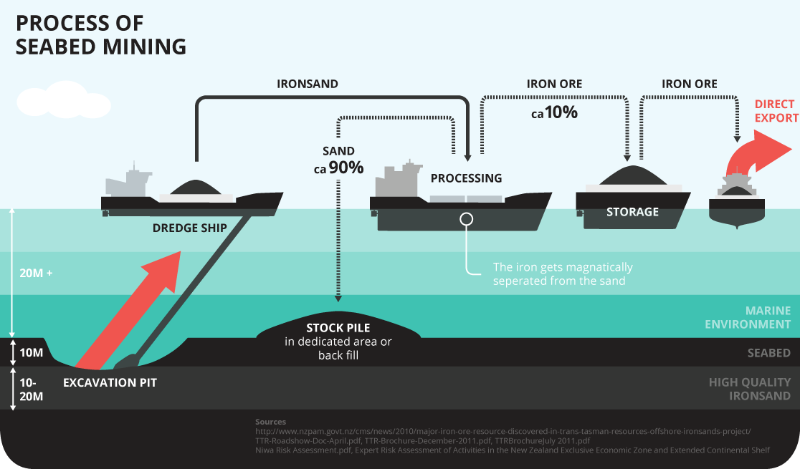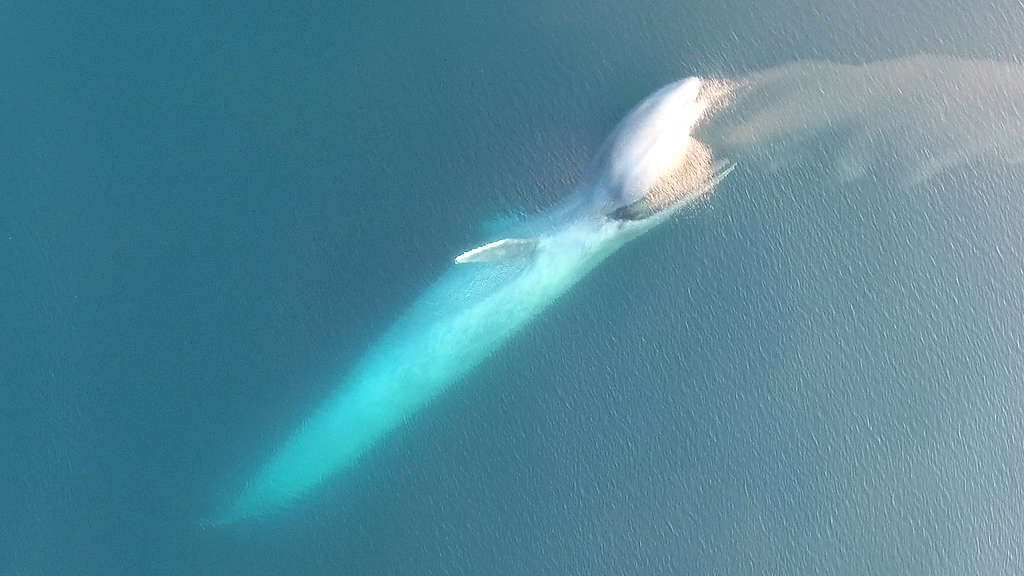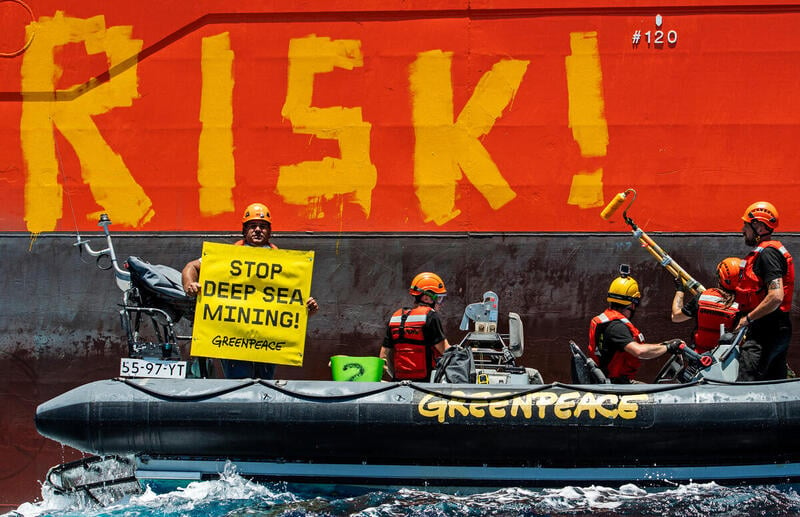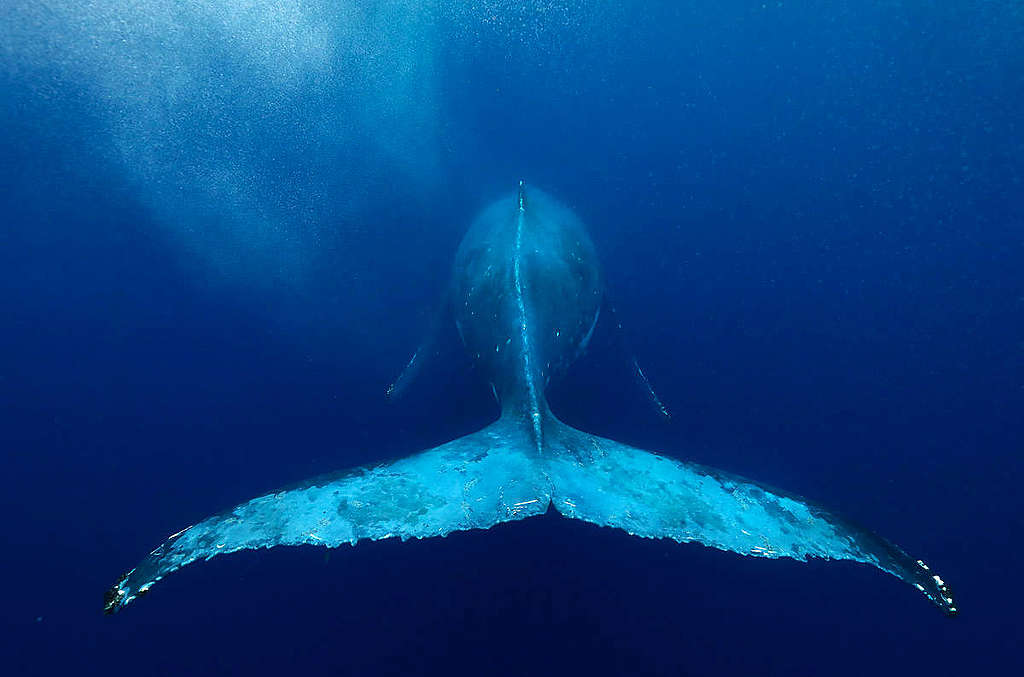Imagine a blanket of darkness swallowing your surroundings, as sand and sediment rain from the sky. Imagine the trees being consumed, small plants and animals becoming dark with the world around you.
We recoil at visions of this on land, but this is the reality for the sea floor under seabed mining, that sucks up huge volumes of sand from the bottom of the sea. This is then pumped up to ships and sorted by their value to us humans.
Anything that isn’t worth taking is then dumped back into the sea, causing a large area to be covered in darkness.

Read more: What is seabed mining and why is it bad for the environment?
This is a destructive practice that will have dire effects on our ocean and the beautiful marine life that exists within it – if we don’t put a stop to it urgently.
Here in Aotearoa we have companies ready to launch these seabed mining operations now.
One of these companies is Trans Tasman Resources (TTR), an international mining company that has been fighting to open a mine in the South Taranaki Bight for several years. If they succeed, it would be the largest project of its kind.
This mining operation would suck up millions of tonnes of sand from a 66 square kilometre area off the coast of Patea. The potential for damage is huge: countless species disturbed, marine plants smothered, and habitats destroyed.
So far, the mine has been held back by a small and committed group of people. Local iwi, community, fishing and environmental groups – including Greenpeace – have been able to hold TTR off at the pass. But it shouldn’t be left up to them to keep the door shut to miners.

Other seabed mining companies such as Chatham Rock Phosphate, are waiting in the wings to see if the TTR mine will be given the go ahead, essentially opening the floodgates for companies left, right, and centre to enter New Zealand waters in search of these minerals.
And seabed miners aren’t just eyeing up New Zealand waters. The entire Pacific region is being seen as a new frontier for ocean mining – with international companies promising to make the region rich in exchange for mining the seafloor.
Companies headquartered in the Global North, including the Metals Company and Global Sea Mineral Resources (GSR), are in the Pacific right now, running tests as they prepare to start commercially mining the region.
This could have devastating consequences for the ocean, and for the communities that rely on it.
Communities across the Pacific are already standing up to say no to becoming the testing ground for seabed mining, with activists calling for a Pacific Blue Line to be drawn against this practice.
Greenpeace’s Rainbow Warrior ship has been out in the Pacific too, confronting the industry and bearing witness to its activities. Fijian activist Victor Pickering is on board the Warrior, and wrote this piece about his reasons for resisting ocean mining.

Scientists warn us that the damage from sea bed mining could be irreversible. We have to ask ourselves the question; are we going to be okay with not being able to undo these impacts?
By banning seabed mining in Aotearoa we can send a strong message across the Pacific that we don’t want this untested industry to destroy our oceans.
So what can you and I do about it?
With support from New Zealanders like you, we have ended oil exploration permits off our coastline, we’ve banned shark finning, single use plastic bags, protected maui dolphins and maintained a strong nuclear free stance.
All of these successes for the ocean have come from people like you joining the cause to say loud and clear, that we don’t support these destructive practices. We now need to stand together, to protect our oceans, for our people, now and into the future.
Take a stand with us. Sign the petition now.

Seabed mining is a new threat to the oceans. Now is our chance to prevent the destruction before it’s too late.
Add my name


